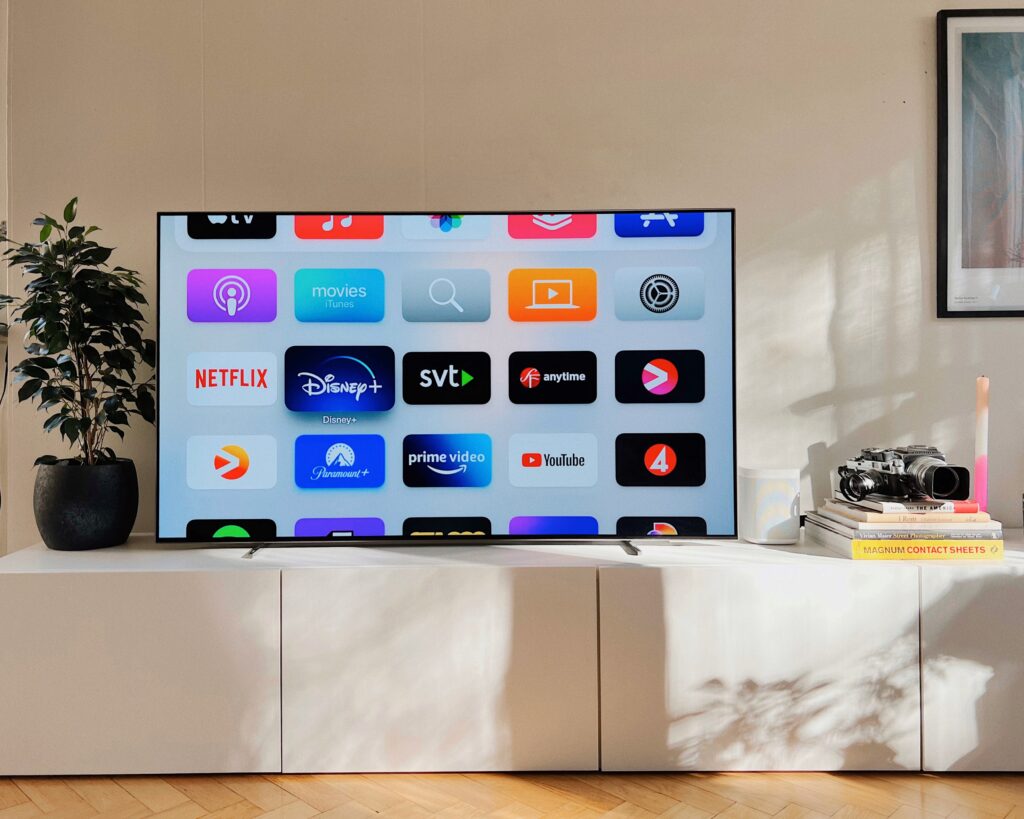Smart TVs have revolutionised the way we consume content by combining traditional television with internet capabilities. When shopping for a smart TV, you’ll encounter various types, each with its own set of features.
In this guide, I will help you navigate the choices and choose the right smart TV type to match your preferences and needs.

1. LED and LCD Smart TVs:
LED (Light Emitting Diode) and LCD (Liquid Crystal Display) TVs are among the most common types. They offer excellent picture quality, energy efficiency, and come in a variety of sizes. These are suitable for most viewers and offer an excellent balance of features and affordability.
2. OLED Smart TVs:
OLED (Organic Light Emitting Diode) TVs provide incredibly vibrant colours and deep blacks. They are known for their superior picture quality and are often favoured by cinephiles and those seeking an immersive viewing experience. However, OLED TVs tend to be more expensive.
3. QLED Smart TVs:
QLED (Quantum Dot LED) TVs, usually offered by Samsung, combine LED technology with quantum dot technology. They offer stunning picture quality with vibrant colours and are ideal for those who want a premium viewing experience without the high cost of OLED.

4. Plasma TVs:
Plasma TVs, while less common today, were once known for their deep blacks and wide viewing angles. They were preferred by home theatre enthusiasts. If you can find a good-quality plasma TV, it can still offer excellent picture quality, but they are becoming rare in the market.
5. Mini-LED and Micro-LED TVs:
Mini-LED and Micro-LED are emerging technologies. They offer improved brightness and contrast compared to traditional LED/LCD TVs. However, they are relatively new and may come at a premium price.
6. Screen Size:
When choosing a smart android tv type, consider the screen size that suits your space. LED and LCD TVs come in a wide range of sizes, making it easier to find the perfect fit. OLED, QLED, and other premium types also offer various size options.
7. Resolution:
Resolution plays a crucial role in picture quality. Full HD (1080p) is suitable for smaller screens, while 4K Ultra HD is preferred for larger displays. If you’re investing in a larger TV, consider 4K or even 8K for the best viewing experience.

8. HDR Compatibility:
High Dynamic Range (HDR) enhances picture quality by offering a broader range of colours and better contrast. Most modern smart TVs support HDR, but the level of HDR performance can vary between different types.
9. Smart Features:
Smart TVs come with various built-in features and apps. Consider the smart features you need, such as streaming services, voice assistants, app stores, and home automation compatibility. Most smart TV types offer similar smart features, but the user interface may vary.
10. Refresh Rate:
The refresh rate affects motion handling. For smoother action, consider a TV with a higher refresh rate, particularly if you’re into gaming or fast-paced sports. LED, LCD, and OLED TVs often offer different refresh rate options.
11. Gaming Capabilities:
If you’re a gamer, look for smart TVs with features like low input lag, variable refresh rate (VRR), and ALLM (Auto Low Latency Mode). OLED and some LED/LCD TVs are popular choices for gaming.

12. Audio Quality:
Audio is a crucial part of the viewing experience. Check the TV’s audio capabilities, including built-in speakers, audio processing, and compatibility with soundbars or home theatre systems.
13. Brand and Model:
Different brands offer various TV types with unique features and quality. Research and read reviews to find reputable brands and models that align with your requirements.
14. Viewing Environment:
Consider your viewing environment. If your room has a lot of natural light, a TV with high brightness capabilities may be necessary. OLED and QLED TVs can perform well in bright rooms.
15. Longevity and Future-Proofing:
Investing in a TV is a long-term decision. Consider factors like software updates, compatibility with emerging technologies, and how well the TV will serve you in the coming years.

Conclusion
Selecting the right smart TV type is a matter of aligning your preferences, budget, and viewing needs. Each type, whether it’s LED, LCD, OLED, QLED, or emerging technologies, has its unique strengths and considerations. Your choice should ultimately result in a TV that not only provides exceptional picture quality but also integrates seamlessly with your smart home, gaming, and entertainment preferences.


3 comments
Oi, pessoal! Quais casas de apostas, na sua experiência, oferecem as probabilidades mais favoráveis?
Eu costumo usar o primeiro que encontro. Mas me pergunto se há mais alguma coisa no mercado que vale a pena tentar?
Recomendo examinar as análises detalhadas desse site de apostas. Lá, encontrará minuciosas avaliações das probabilidades, tornando mais fácil escolher a plataforma ideal para suas apostas em https://amelhorcasadeaposta.com/casas-de-apostas-de-tenis/. Pessoalmente, sou usuário do site e já conquistei ganhos significativos para financiar a faculdade do meu filho. Se optar por experimentar, me avise; desejo boa sorte! Lembre-se, apostar em acumuladores costuma resultar em vitórias frequentes.